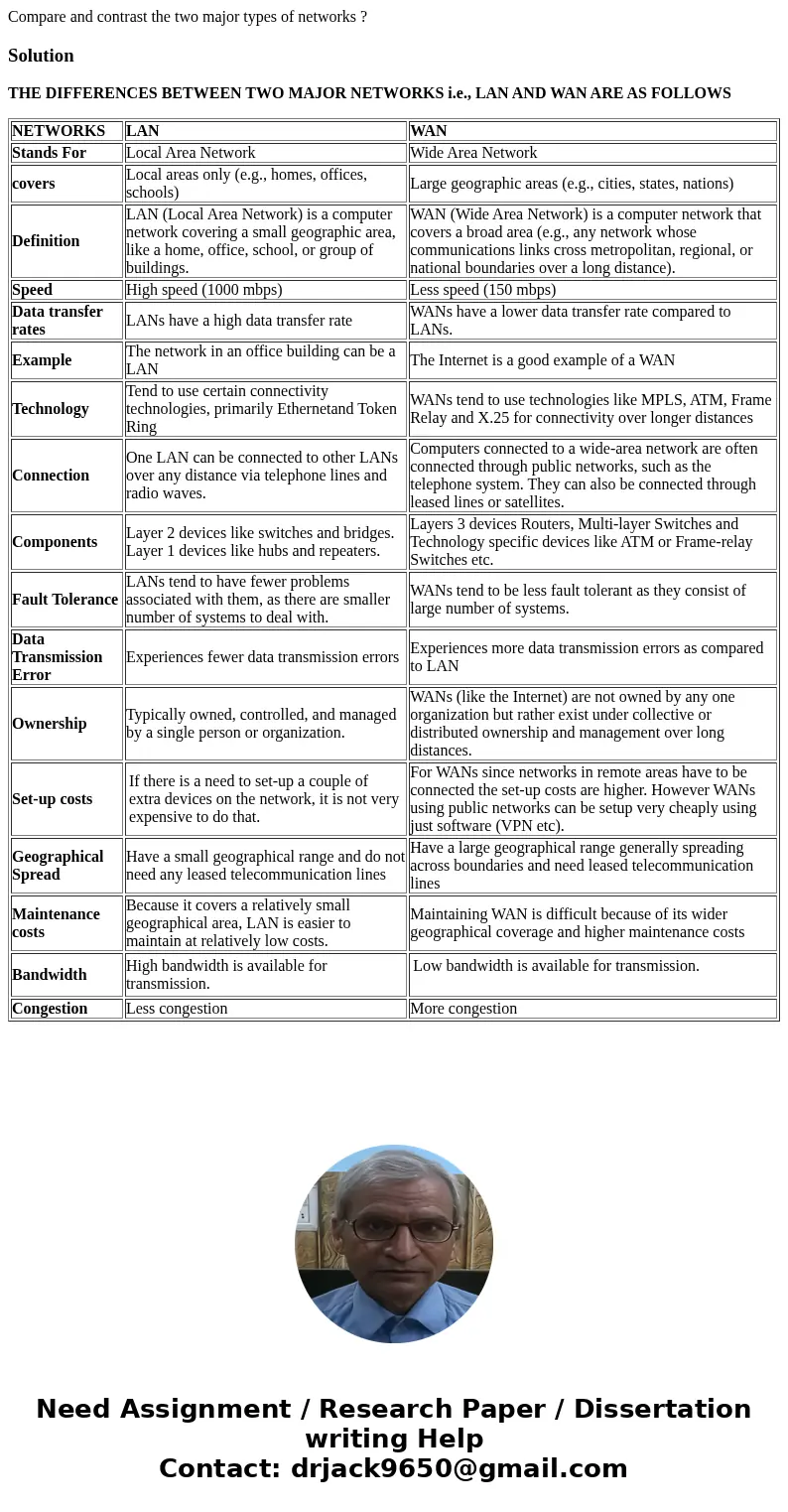| NETWORKS | LAN | WAN |
| Stands For | Local Area Network | Wide Area Network |
| covers | Local areas only (e.g., homes, offices, schools) | Large geographic areas (e.g., cities, states, nations) |
| Definition | LAN (Local Area Network) is a computer network covering a small geographic area, like a home, office, school, or group of buildings. | WAN (Wide Area Network) is a computer network that covers a broad area (e.g., any network whose communications links cross metropolitan, regional, or national boundaries over a long distance). |
| Speed | High speed (1000 mbps) | Less speed (150 mbps) |
| Data transfer rates | LANs have a high data transfer rate | WANs have a lower data transfer rate compared to LANs. |
| Example | The network in an office building can be a LAN | The Internet is a good example of a WAN |
| Technology | Tend to use certain connectivity technologies, primarily Ethernetand Token Ring | WANs tend to use technologies like MPLS, ATM, Frame Relay and X.25 for connectivity over longer distances |
| Connection | One LAN can be connected to other LANs over any distance via telephone lines and radio waves. | Computers connected to a wide-area network are often connected through public networks, such as the telephone system. They can also be connected through leased lines or satellites. |
| Components | Layer 2 devices like switches and bridges. Layer 1 devices like hubs and repeaters. | Layers 3 devices Routers, Multi-layer Switches and Technology specific devices like ATM or Frame-relay Switches etc. |
| Fault Tolerance | LANs tend to have fewer problems associated with them, as there are smaller number of systems to deal with. | WANs tend to be less fault tolerant as they consist of large number of systems. |
| Data Transmission Error | Experiences fewer data transmission errors | Experiences more data transmission errors as compared to LAN |
| Ownership | Typically owned, controlled, and managed by a single person or organization. | WANs (like the Internet) are not owned by any one organization but rather exist under collective or distributed ownership and management over long distances. |
| Set-up costs | If there is a need to set-up a couple of extra devices on the network, it is not very expensive to do that.
| | For WANs since networks in remote areas have to be connected the set-up costs are higher. However WANs using public networks can be setup very cheaply using just software (VPN etc). |
| Geographical Spread | Have a small geographical range and do not need any leased telecommunication lines | Have a large geographical range generally spreading across boundaries and need leased telecommunication lines |
| Maintenance costs | Because it covers a relatively small geographical area, LAN is easier to maintain at relatively low costs. | Maintaining WAN is difficult because of its wider geographical coverage and higher maintenance costs |
| Bandwidth | High bandwidth is available for transmission. | | Low bandwidth is available for transmission. |
|
| Congestion | Less congestion | More congestion |

 Homework Sourse
Homework Sourse